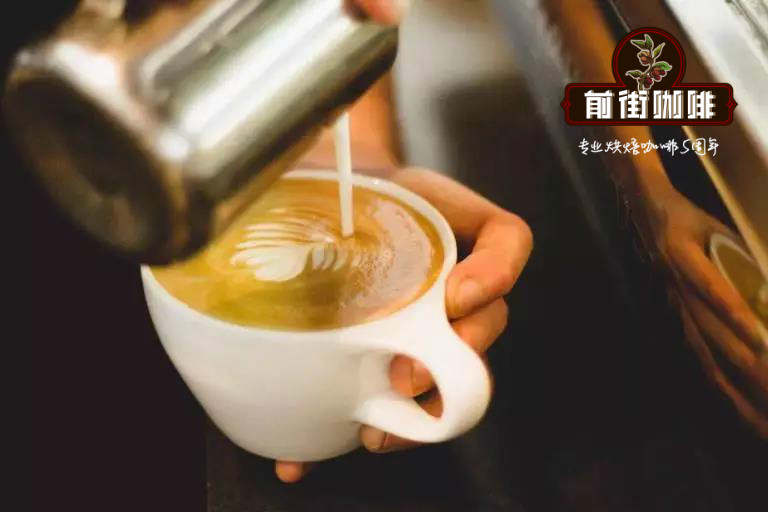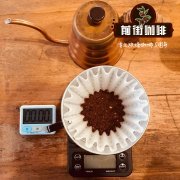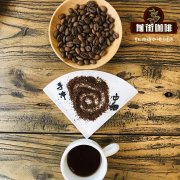What is espresso? How to correctly distinguish between latte, macchiato, cappuccino and mocha?

Professional coffee knowledge exchange more coffee bean information please follow the coffee workshop (Wechat official account cafe_style)
Do you feel a little confused when you stand at the counter of the Italian coffee shop and look at the dazzling variety of coffee flavors? This time, I will do a general arrangement for you, which will not only let you recognize the differences in the taste of various coffee, but also explain the proportion of blending in detail.
What we mean by Espresso is espresso made by an espresso machine. Because Espresso has a strong flavor and strong taste, many people can't get used to it. Therefore, based on Espresso, many different types of coffee have been derived.
1. Latte (Caffe Latte): coffee, latte two protagonists
It's Italian, meaning coffee latte, and Latte means Italian milk. If you go to a coffee bar in Italy and tell the barista that you want a Latte, the barista may look at you in doubt and give you a glass of milk. To get a coffee latte in Italy, you have to say "" to get an authentic espresso latte.
Of course, outside Europe, including the United States and Taiwan, coffee lattes are referred to as "latte Latte" for short. However, the latte you ordered in Italy is likely to have no milk foam, because the foam machine was invented later and first appeared in the United States in the 1950s and 1960s. Before that, Italian lattes were served only with milk.
In terms of composition, the latte is 1/5 espresso, 2/5 hot milk and 2/5 milk foam. Latte flavor, with espresso and milk as the dual protagonists, taste the synthesis and balance of the two, is the most unique flavor of the latte.
two。 Cappuccino (Cappuccino): coffee as the leading role and milk as the supporting role
When we adjust the proportion of coffee in the latte to make the proportion of coffee more and more, the color of the cup will change to dark brown, with a trace of white milk, just like the monks of St. Franciscans of Italy, on a dark brown coat, covered with a white headscarf. In Italian, Cappuccino refers to the monks of St. Franciscans, which gives Cappuccino its name.
It differs from Latte in that it contains more espresso, with 1/3 espresso, 1/3 hot milk and 1/3 milk foam. It can also be sprinkled with cocoa powder and cinnamon powder to enhance flavor. In terms of taste, it is based on the flavor of coffee, with milk as the match.
3. Coffee Caf'e au lait: milk as the protagonist
French, "au" is a preposition, such as "in" in English, which means to put or put inside, while "lait" means "milk" in French, so it means to add coffee to milk, transliterated as coffee O'Lei. It is mixed with a lot of milk in coffee. The French like to put it in a bowl and eat it with French bread.
O'Lei does not have a recognized proportion, and it is uncertain how much milk is added, but in terms of flavor, it takes milk as the protagonist, and the smell of milk almost completely overshadows the taste of coffee.
4. Mocha: chocolate is the main character
It is a small town in Yemen in the Middle East, where coffee beans have a chocolate flavor, and later are generally referred to as special varieties of coffee beans with chocolate aroma, known as "mocha beans". But in the end, it was changed to the name of a drink.
The proportion of mocha is 2/5 espresso, 2/5 hot chocolate and 1/5 hot milk. Is both like chocolate, but also love coffee gluttons, the most suitable coffee taste, and a small amount of hot milk, will bring a smoother taste.
5. Macchiato (Macchiato)
Is to add a small amount of milk foam to espresso, perhaps only a few milliliters, which can be filled with an Espresso cup. It looks like a little bit of white on the Espresso. And "" means "spot" in Italian, which gives Macchiato its name.
If you use double espresso (Double Espresso) to make macchiato, it is called big macchiato (Long Macchiato), while only one espresso (Single Espresso) is used to make macchiato, it is called Short Macchiato.
The flavor is very strong, almost no too much dilution, milk in which only taste assistance, to taste carefully in order to taste a trace of milk flavor. But this is also the attraction, a little bit of milk, a trace of milk fragrance, let people aftertaste again and again.
6. Caramel macchiato (Caramel Macchiato)
Caramel macchiato is a variety of macchiato, that is, in macchiato, add vanilla, sprinkle with a thick layer of caramel, and then drink without stirring at all. In this small sip, you can taste the bitterness of coffee, the aroma of vanilla and the sweetness of caramel, and the multi-level taste experience is the most attractive place of caramel macchiato.
7. American coffee (Americano)
When American soldiers came to Italy during World War II, they drank Espresso made from unaccustomed coffee machines, so they added a lot of hot water to the Espresso to dilute the taste.
This strange move surprised the Italians, so they called this American way of drinking "Americano", that is, the Italian word for "American". When Americans hear this slightly sarcastic title, not only do they not think of a pestle, but they feel complacent, so the name Americano has spread, referring specifically to the way Espresso is diluted with hot water.
In fact, the above production proportions are just for reference. In the case of lattes and cappuccinos, the distinction is not so obvious, because the two are purely changes in modulation proportions. at present, some Starbucks in the United States have stopped selling cappuccinos because they are so similar to lattes. The author thinks that there is no need to care too much about these modulation proportions, which are only for reference rather than absolute. What really matters is to make your favorite coffee drink according to these reference standards.
Important Notice :
前街咖啡 FrontStreet Coffee has moved to new addredd:
FrontStreet Coffee Address: 315,Donghua East Road,GuangZhou
Tel:020 38364473
- Prev

Hand coffee novice choose what kind of hand pot, which brand is good for filling coffee.
Professional coffee knowledge exchange more coffee bean information Please follow the coffee workshop (Wechat official account cafe_style) hand-made coffee can be said to be a process of art, philosophy, practice and self-discovery. Friends who are serious about coffee and pay attention to coffee, I believe they all have this experience: the taste of coffee brewed every day will be different, which link is different? So every time it's different.
- Next

Can coffee taste and description improve the experience of drinking coffee? How do you explain the flavor of coffee?
More information on coffee beans Please follow the coffee workshop (official Wechat account cafe_style) it is not easy to try to describe the flavor of coffee. Coffee is popular because of its unique and rich flavor and aroma. Consumers, bean bakers, cup testers and traders all want to describe the flavor they drink into words. But could the problem be that we can't trace it?
Related
- Beginners will see the "Coffee pull flower" guide!
- What is the difference between ice blog purified milk and ordinary milk coffee?
- Why is the Philippines the largest producer of crops in Liberia?
- For coffee extraction, should the fine powder be retained?
- How does extracted espresso fill pressed powder? How much strength does it take to press the powder?
- How to make jasmine cold extract coffee? Is the jasmine + latte good?
- Will this little toy really make the coffee taste better? How does Lily Drip affect coffee extraction?
- Will the action of slapping the filter cup also affect coffee extraction?
- What's the difference between powder-to-water ratio and powder-to-liquid ratio?
- What is the Ethiopian local species? What does it have to do with Heirloom native species?

